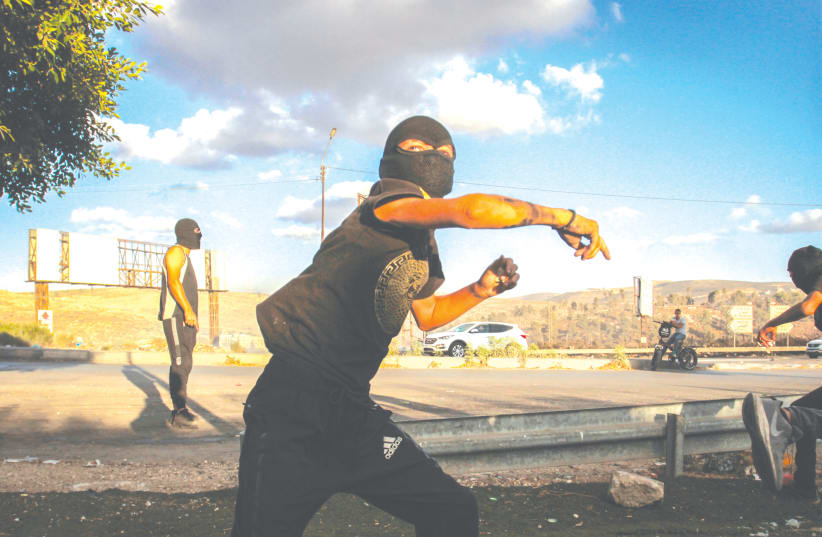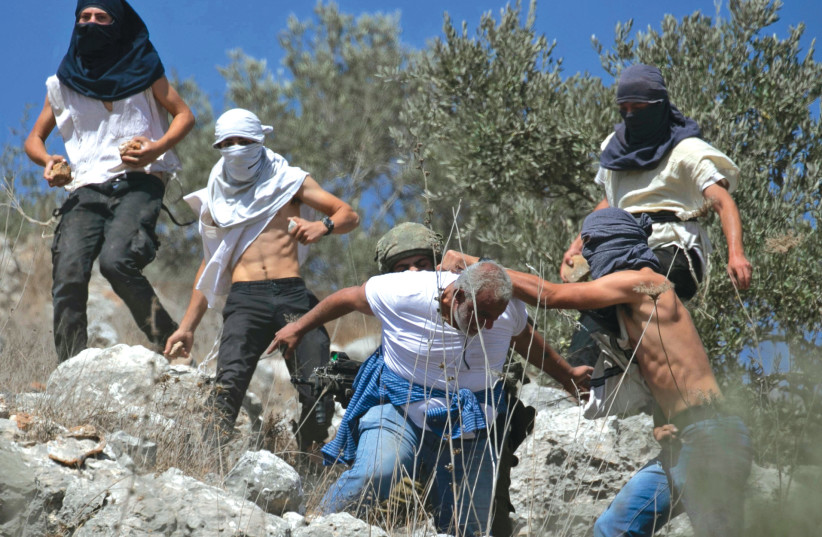The news cycle moves so quickly these days that newspapers and media outlets often report dramatic stories and then move right on to the next story without any follow-up, leaving the reader with just the initial impression. Most readers will not remember many details of a particular story or might not even remember having read it, but the general perception, the gestalt, from the story will stay with them and as such notions accumulate, they build a picture. Without corrective sequels to the initial articles, the resultant perception can be distorted.
An example of this phenomenon relates to the July 22, 2021, Jerusalem Post story with the headline (similarly reported in other news outlets) “Jewish settlers attacked in West Bank amid price tag attack accusations.” The article proceeded to explain that three Jewish Israelis were violently attacked, as they drove through the Palestinian Samarian village of Jamma’in. They claimed that they were the victims of an attempted lynching and demanded that the Arab perpetrators be arrested. In the meantime, Palestinian reports claimed that the three had been involved in a price-tag attack nearby in the vicinity of Hawara.
The news report mentioned that the attacked injured youth who was hospitalized in Beilinson Hospital was arrested by the Shin Bet and forbidden to meet with a lawyer, but it made no mention of arrests on the Arab side, leaving the reader with the impression that the police accepted the Arab version. So ended the story as reported in the news in July. The reader was left with two conflicting claims regarding the background of what was clearly a violent incident.
As often happens, over the following weeks I had many questions that I was hoping to see answered in the news. How were the three Israelis faring? Was additional evidence against them found and were they charged? Was the version alleging an Arab attack on Jews confirmed and the lynch mob that beat and held lit cigarettes on the young Jewish men prosecuted? And so on.
To my dismay, I waited and searched, but found nothing in the mainstream media. I have no personal connection to any of those involved and thus had no means to satisfy my curiosity. Yet, what is certain is that the subtle impression left by the initial report of a serious incident was the lingering sense that settlers may have been involved in perpetrating an anti-Arab incident.
Time did not stand still and the saga continued to unfold. And the subsequent events are both interesting and disturbing. Over time, sources outside of the mainstream media have revealed that the injured Israeli was removed from the hospital prior to medical release in order to be interrogated and he was barred from meeting with a lawyer for two days. As well, his two friends were arrested and interrogated. In December 2021, five months after the event, the police declared that beyond any doubt this was not a price tag attack; the three young Jews were not involved in Jewish terror.
Apparently what actually took place was an attempted murder of Jews by Arabs from both Samaria and Nazareth, and fortunately, no one was more seriously injured. Currently, the authorities have failed to recognize the three young men as victims of terror and there is no indication that the authorities intend to bring the perpetrators to justice.
Follow-up reporting of the continuation of a story is crucial. The original report insinuated that there may have been a price-tag attack gone awry and that the defense establishment was indeed leaning in that direction. There were many details the interested reader was hoping to learn in subsequent reports. And crucially, it turns out that the entire gist of the story was 180 degrees off from what really happened, which was a brutal terror attack against three Israeli Jews, who had innocently taken a shortcut home. There was no Jewish terror in this story.
Might it even be a dereliction of its responsibility to the public for the media, as the fourth pillar of democracy, to fail to follow up on the story? When there is a lack of subsequent reporting there is no public pressure on the defense establishment and no accountability on the part of the authorities to set the record straight. In this case, the original article left the reader with a totally inverted sense of the actual facts and possibly a false impression of larger issues. It should be made clear that in fact: (a) No price tag attack had taken place in this incident and (b) a terrorist attack against Jews had been perpetrated, which potentially could have had even more serious consequences. I hope to be reading in the Jerusalem Post soon that the relevant authorities are assisting the true victims and bringing the terrorists to justice.
The writer is a professor of neuroscience at Bar-Ilan University.

